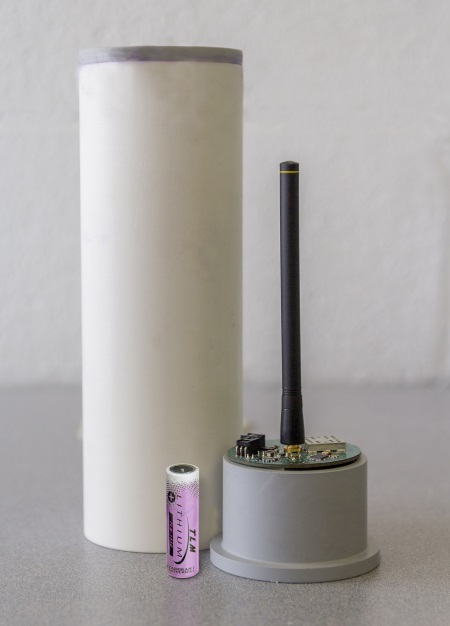By SOL JACOBS,
Vice President of Manufacturing,
Tadiran Batteries,
www.tadiranbat.com
According to the American Society of Civil Engineers, more than one in four U.S. bridges are either structurally deficient or functionally obsolete, requiring trillions of dollars to bring our highway infrastructure back to acceptable conditions.
Similar problems plague our public water utilities, where up to 20% of our water resources are being lost due to aging pipelines. With limited funds available for infrastructure revitalization, intelligent planning and foresight is required to establish a long-term roadmap for 'smart infrastructure' spending. This comprehensive approach will require reliable data gained from strategically placed remote wireless sensors that monitor stress and deterioration, improve service-life predictive modeling, and utilize real-time traffic flow data to reduce highway congestion.
Li batteries for remote devices
Much of our nation’s infrastructure is located off the grid, requiring wireless sensors to be autonomously self-powered using either bobbin-type lithium thionyl chloride (LiSOCl2 ) batteries or energy harvesting applications that utilize rechargeable lithium ion batteries.
The lightest non-gaseous metal, lithium is ideal for remote wireless applications since it offers the highest specific energy (energy per unit weight) and energy density (energy per unit volume) of any chemistry. Lithium batteries are also non-aqueous, enabling certain cells to offer an extended temperature range of –55° to 125°C.
Among all lithium chemistries, only bobbin-type lithium thionyl chloride (LiSOCl2 ) chemistry can offer 40-year service life due to its high potential and very low annual self-discharge. Bobbin-type LiSOCl2 batteries were first deployed in the mid 1980s by water and gas utilities to power meter transmitter units (MTUs) that track user consumption, identify potential leaks, and detect theft of services. As these devices were being upgraded to newer technology, tests showed that the original LiSOCl2 batteries still retained significant capacity even after 28+ years in the field. The potential for 40-year operating life is not automatically guaranteed, as inferior-made bobbin-type LiSOCl2 batteries can have an annual self-discharge rate 2 to 3 times higher than leading brands, resulting in much shorter battery life.
Here are some typical examples involving bobbin-type LiSOCl2 batteries as well as rechargeable lithium ion batteries used in conjunction with energy harvesting devices.
AMR/AMI metering
Water and gas utilities are using advanced AMR/AMI meter reading devices to identify leaks, track customer usage and billing, and allow for remote shut-off and reactivation. These devices operate in a standby mode that draws nominal power, periodically switching to active mode where high pulses are required for brief intervals to initiate data retrieval and transmission.
When high pulses are first required, a standard bobbin-type LiSOCl2 battery can experience a condition known as transient minimum voltage (TMV) during initial battery discharge due to its low rate design. PulsesPlus batteries were developed to address TMV issues by combining a standard bobbin-type LiSOCl2 cell with a patented Hybrid Layer Capacitor (HLC). The battery and HLC work in parallel, with the battery supplying long-term low-current power and the HLC supplying pulses up to 15 A. PulsesPlus batteries can address TMV issues without the balancing and current leakage problems associated with supercapacitors.
Bobbin-type LiSOCl2 batteries have also been modified to deliver moderate pulses without requiring a hybrid layer capacitor (HLC) to address TMV issues. These TRR Series batteries operate very efficiently and can extend battery operating life up to 15%, especially in extremely hot or cold temperatures.
Structural sensor
Resensys manufactures SenSpot structural integrity sensors that measure stress, strain, tilt, inclination, vibration, displacement, deformation, temperature, and humidity in various infrastructure applications, including bridges, tunnels, towers, and pipelines. SenSpot takes readings once a minute, drawing only microamps of energy. To further minimize energy consumption, Resensys developed a proprietary low power communications protocol for its wireless network.
Resensys specified a Tadiran TL-5902 ½ AA battery with an annual self-discharge rate of
Monitoring for bridge scour
Electrical engineers from the University of Pittsburg recently developed a wireless sensor network for PennDOT that detects erosion within the concrete aggregate that surrounds bridge abutments, or 'bridge scour' (see Fig. 1) . Continuous waterflow serves to erode concrete aggregate, especially during high water events. The solution involves a series of wireless sensors that are housed in watertight ¾-in. PVC tubes, which are strategically placed into vertically-oriented holes bored into the aggregate. Each sensor is uniquely encoded to denote the criticality of the location, providing an early warning system in case the outer layers of concrete aggregate begin to erode.

Fig. 1: A wireless sensor network and a Tadiran battery help detect erosion within the concrete aggregate that surrounds bridge abutments
The battery remains dormant with no energy drain. If the sensor becomes dislodged, and tilts horizontally, it automatically activates the battery and begins transmitting RFID signals to a nearby transceiver for approximately 30 minutes. A TLM-1550HP battery was chosen because it offers extremely long storage life and a high rate of energy drain in a brief amount of time.
Structural health monitoring
Energy harvesting can be used for certain infrastructure applications, especially when sufficient sunlight or vibration is available. A recent example involves the Sol Chip Pak, an integrated solar panel that utilizes both a primary back-up battery and a TLI Series rechargeable lithium ion battery to provide a reliable 20-year solution for numerous applications, including structural health monitoring.
Sol Chip specified the use of TLI Series rechargeable lithium ion batteries over standard consumer lithium ion batteries that were initially designed to power cameras and cell phones, and other 'throwaway' applications requiring 5-year battery life with approximately 1,000 charge cycles. Use of an industrial-grade TLI Series battery enables the Sol Chip Pak to offer 20-year operating life with up to 5,000 charging cycles, and an extended temperature range of -40° to +85°C.
Advertisement
Learn more about Tadiran





